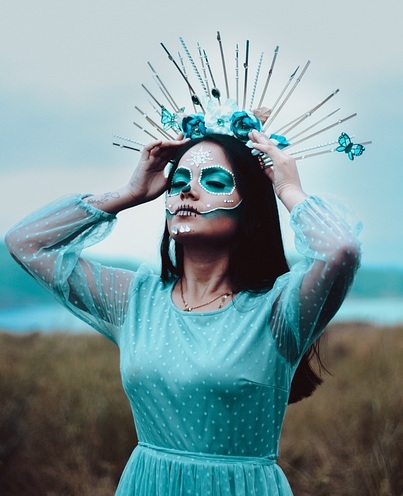Did La Llorona Really Drown Her Children? Myth Debunked

Did La Llorona Really Drown Her Children? Myth Debunked
Have you heard the eerie wails of La Llorona, the weeping woman said to haunt rivers, mourning the children she drowned? The La Llorona myth is one of the most haunting tales in Mexican folklore, but did she really commit such a tragic act? Join us as we trace its origins, explore its cultural variations, and debunk misconceptions to reveal the truth behind this chilling legend.
Origins of the La Llorona Myth
The La Llorona myth is a staple of Latin American storytelling, but where did it come from? Let’s uncover its historical roots.
Colonial Mexico and Indigenous Roots
The story likely emerged in Mexico during the 16th century, blending Spanish colonial influences with indigenous beliefs. Some scholars tie La Llorona to the Aztec goddess Cihuacoatl, a mourning mother figure associated with childbirth and loss (University of Texas, 2019). Her tale of drowning her children may reflect colonial fears of betrayal and cultural mixing.
Historical Context
The legend took shape during a time of upheaval, as Spanish colonizers disrupted indigenous communities. Stories of a woman punished for her actions—often linked to infidelity or rebellion—served as cautionary tales, rooted in the social tensions of the era (National Autonomous University of Mexico, 2020).

Cultural Variations of the La Llorona Myth
The weeping woman legend varies across cultures, reflecting local values and fears. Here are some key versions.
Mexican Version
In Mexico, La Llorona is often Maria, a woman who drowns her children after her lover betrays her, then wanders rivers crying, “¡Ay, mis hijos!” Some versions cast her as a tragic figure, others as a vengeful spirit. This duality makes her a complex icon in Mexican folklore.
Central American Tales
In Guatemala and El Salvador, La Llorona is called “La Siguanaba” or “La Sihuanaba,” a woman who lures men to their doom near water. Her story shifts focus from children to punishing unfaithful men, reflecting local gender dynamics (University of San Carlos, Guatemala, 2021).
South American Adaptations
In the Andes, similar figures like “La Viuda” (the Widow) echo La Llorona, but her story often involves supernatural seduction rather than child loss. These variations highlight how Latin American myths adapt to regional fears.
North American Influence
In the U.S. Southwest, La Llorona is a cautionary tale for children, warning them to stay away from rivers. Her story blends Mexican roots with American storytelling, often used to teach obedience (University of New Mexico, 2020).
Symbolic Meanings of the La Llorona Myth
The La Llorona myth is more than a ghost story—it carries deep cultural and emotional weight.
Maternal Grief and Guilt
La Llorona embodies the pain of losing children, whether through tragedy or societal pressure. Her endless weeping symbolizes unresolved grief, resonating with mothers facing loss or judgment. This makes her a universal figure of sorrow in Mexican folklore.
Gender and Power Dynamics
The myth often portrays La Llorona as a woman punished for defying norms—whether through infidelity or rebellion. It reflects patriarchal fears of female agency, warning women to conform to societal roles. Her story critiques these constraints while amplifying them.
Modern Interpretations of La Llorona
The weeping woman legend continues to captivate audiences, evolving in today’s world.
Pop Culture and Media
La Llorona has starred in films like The Curse of La Llorona (2019) and TV shows like Grimm. These portrayals often lean into horror, but some, like the animated Coco, nod to her tragic side, keeping her alive in Latin American myths.
Literature and Art
Writers like Sandra Cisneros weave La Llorona into stories exploring identity and loss, while artists depict her as a ghostly mother in vibrant murals. Her image bridges traditional folklore with modern Mexican-American identity.
Social Commentary
Activists use La Llorona to highlight issues like maternal mental health or immigration struggles, reimagining her as a symbol of systemic injustice rather than personal failure. This shift shows her enduring relevance.
Debunking Misconceptions About La Llorona
Did La Llorona really drown her children? Let’s tackle the La Llorona myth head-on.
No Historical Evidence
No records confirm a real woman named Maria drowning her children in colonial Mexico. The story likely blends indigenous myths with Spanish morality tales, creating a fictional figure rather than a historical one (University of Arizona, 2021).
Not Just a Villain
Many see La Llorona as a monster, but her story is more complex. In some versions, she’s a victim of betrayal or poverty, driven to desperation. This nuance challenges the idea that she’s purely evil.
Not a Universal Tale
While La Llorona is iconic in Mexico, her story isn’t identical across cultures. Variations like La Siguanaba show that Latin American myths adapt to local contexts, not a single “true” version.
Cross-Cultural Comparisons
The weeping woman legend shares traits with other global myths, but it’s uniquely tied to Latin American experiences.
Banshee (Irish Mythology)
Like La Llorona, the Irish Banshee wails to foretell death, often near water. Both figures embody grief, but the Banshee warns of loss rather than causing it, lacking La Llorona’s maternal tragedy.
Kuchisake-onna (Japanese Mythology)
Japan’s Kuchisake-onna, a vengeful female spirit, targets victims like La Llorona. Yet her story focuses on vanity and betrayal, not motherhood, showing a different cultural lens on female spirits.
Pontianak (Malaysian Mythology)
The Pontianak, a ghostly woman who died in childbirth, haunts men in Southeast Asia. Like La Llorona, she’s tied to maternal loss, but her focus is revenge, not remorse, highlighting regional differences.
Conclusion
The La Llorona myth captivates us with its blend of grief, guilt, and ghostly horror, but there’s no evidence she drowned her children. Rooted in colonial Mexico and shaped by cultural fears, her story reflects universal themes of loss and societal pressure. Dive into more myths at omnimyths.com to uncover the truth behind the tales!
Frequently Asked Questions
Q: Did La Llorona really drown her children?
A: No historical evidence supports this. The La Llorona myth likely blends Aztec and Spanish stories, not a real event.
Q: Why is La Llorona called the weeping woman?
A: Her name comes from her endless crying for her lost children, a symbol of maternal grief in Mexican folklore.
Q: How does La Llorona differ from other ghost myths?
A: Unlike the Banshee or Pontianak, La Llorona’s story centers on maternal loss and guilt, tied to specific Latin American cultural fears.
Q: Why does the La Llorona myth persist today?
A: Its themes of grief and societal pressure resonate, while media like films keep the weeping woman legend alive.
Q: How do cultural variations of La Llorona vary?
A: In Mexico, she mourns her children; in Central America, she punishes men as La Siguanaba, reflecting local values.